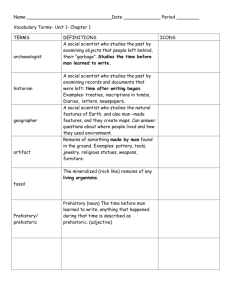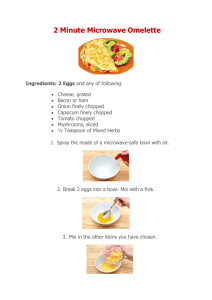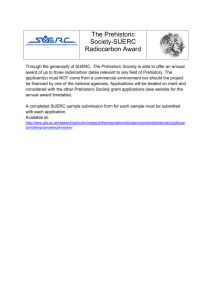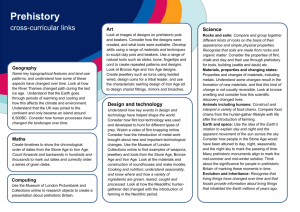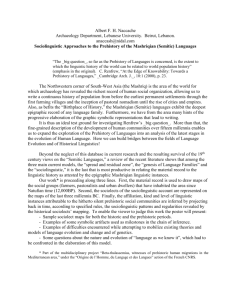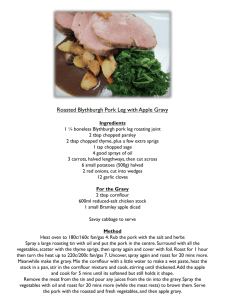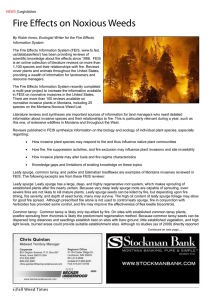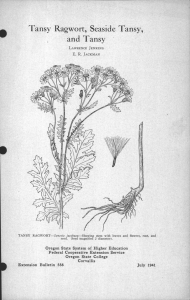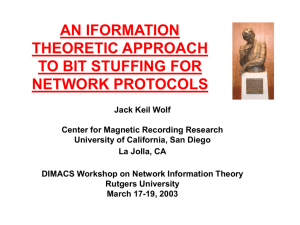Food and Cooking in Prehistoric Heslerton
advertisement
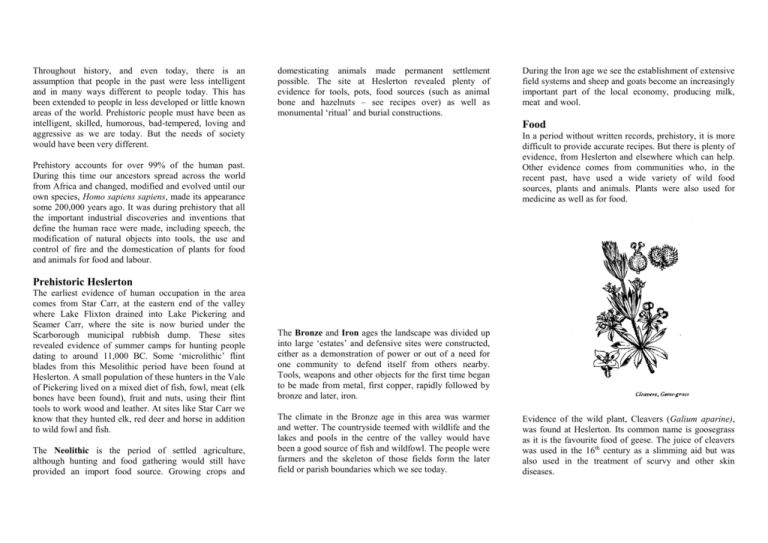
Throughout history, and even today, there is an assumption that people in the past were less intelligent and in many ways different to people today. This has been extended to people in less developed or little known areas of the world. Prehistoric people must have been as intelligent, skilled, humorous, bad-tempered, loving and aggressive as we are today. But the needs of society would have been very different. domesticating animals made permanent settlement possible. The site at Heslerton revealed plenty of evidence for tools, pots, food sources (such as animal bone and hazelnuts – see recipes over) as well as monumental ‘ritual’ and burial constructions. During the Iron age we see the establishment of extensive field systems and sheep and goats become an increasingly important part of the local economy, producing milk, meat and wool. Food In a period without written records, prehistory, it is more difficult to provide accurate recipes. But there is plenty of evidence, from Heslerton and elsewhere which can help. Other evidence comes from communities who, in the recent past, have used a wide variety of wild food sources, plants and animals. Plants were also used for medicine as well as for food. Prehistory accounts for over 99% of the human past. During this time our ancestors spread across the world from Africa and changed, modified and evolved until our own species, Homo sapiens sapiens, made its appearance some 200,000 years ago. It was during prehistory that all the important industrial discoveries and inventions that define the human race were made, including speech, the modification of natural objects into tools, the use and control of fire and the domestication of plants for food and animals for food and labour. Prehistoric Heslerton The earliest evidence of human occupation in the area comes from Star Carr, at the eastern end of the valley where Lake Flixton drained into Lake Pickering and Seamer Carr, where the site is now buried under the Scarborough municipal rubbish dump. These sites revealed evidence of summer camps for hunting people dating to around 11,000 BC. Some ‘microlithic’ flint blades from this Mesolithic period have been found at Heslerton. A small population of these hunters in the Vale of Pickering lived on a mixed diet of fish, fowl, meat (elk bones have been found), fruit and nuts, using their flint tools to work wood and leather. At sites like Star Carr we know that they hunted elk, red deer and horse in addition to wild fowl and fish. The Neolithic is the period of settled agriculture, although hunting and food gathering would still have provided an import food source. Growing crops and The Bronze and Iron ages the landscape was divided up into large ‘estates’ and defensive sites were constructed, either as a demonstration of power or out of a need for one community to defend itself from others nearby. Tools, weapons and other objects for the first time began to be made from metal, first copper, rapidly followed by bronze and later, iron. The climate in the Bronze age in this area was warmer and wetter. The countryside teemed with wildlife and the lakes and pools in the centre of the valley would have been a good source of fish and wildfowl. The people were farmers and the skeleton of those fields form the later field or parish boundaries which we see today. Evidence of the wild plant, Cleavers (Galium aparine), was found at Heslerton. Its common name is goosegrass as it is the favourite food of geese. The juice of cleavers was used in the 16th century as a slimming aid but was also used in the treatment of scurvy and other skin diseases. Recipes The recipes below are taken from the English Heritage book, Food & Cooking in Prehistoric Britain, apart from Pork with Hazelnut stuffing which was once on the menu of the Dawnay Arms in Heslerton. Nettle purée Put young nettle tops into boiling water and boil until tender. Drain well and chop finely. Reheat adding butter and salt to taste. Sorrel, dandelion, spinach, sow thistle, watercress and lady’s smock may all be mixed for this dish but change the water after five minutes boiling as some of them are bitter. Tansy pudding ½ pt (275 ml) milk 1/3 oz (15 g) butter 3 oz (75 g) fresh white breadcrumbs 1 oz (25 g) sugar or honey 2 tsps (10 ml) finely chopped tansy leaves 2 eggs, beaten Honey and cream, to serve Boil the milk and butter together and pour over the breadcrumbs. Set aside for 30 minutes. Add the sugar or honey and the tansy leaves to the eggs, then mix with the breadcrumbs and bake the mixture in a moderate oven, gas mark 4, 350°F (180°C), until set. Eat cold with honey and cream. Evidence for the stinging nettle (Urtica dioica) have been found in the excavations at Heslerton. Pork with hazelnut stuffing 3lbs (1.5kg) piece of belly pork 3oz (75g) fresh breadcrumbs 1 medium onion, finely chopped, 1 small cooking apple, finely chopped 2oz (50g) chopped hazelnuts a few sprigs of fresh thyme 1 medium egg salt to taste string Place all the stuffing ingredients in a bowl and mix well. Lay the pork fat side down and place the stuffing along the centre. Fold in the sides to form a roll and secure with string. Score the fat and rub with salt if you like it crispy. Roast at gas mark 8, 450°F (230°C) for 30 minutes then lower the temperature to gas mark 5, 375°F (190°C) for a further 90 minutes. Serve with leafy green vegetables. Drawings courtesy of English Heritage © The Landscape Research Centre 2003 FOOD & COOKING IN PREHISTORIC HESLERTON
